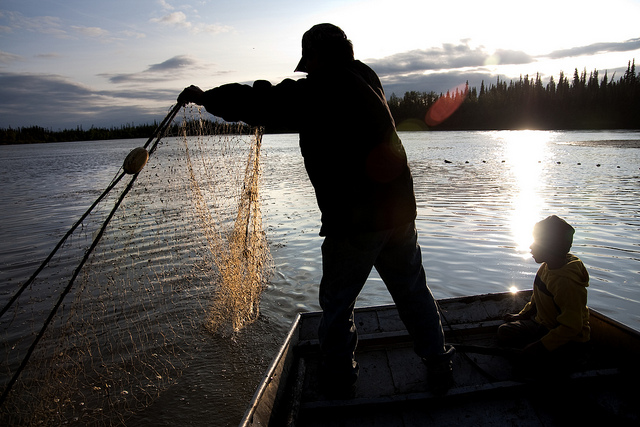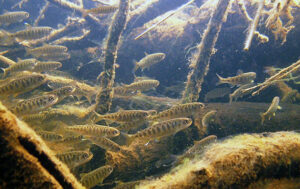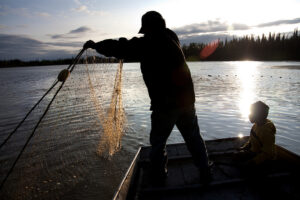
Will Alaska Supreme Court let Alaskans vote on how the state protects fish?
Trustees for Alaska went to the Alaska Supreme Court today to argue that the Alaska Constitution guarantees Alaskans the right to use the initiative process to have a say in how the state manages and protects salmon habitat.

USFWS photo.
“Alaskans have a constitutional right to raise issues like this and to vote on them,” said Trustees’ Legal Director Valerie Brown, the lead attorney for the plaintiff, Stand for Salmon “We’re confident that the Supreme Court will protect that right.”
Fish won big in 2017
The appearance in Court today stems from a lawsuit filed by Trustees on behalf of Stand for Salmon in September 2017 to overturn Lt. Gov. Byron Mallott’s rejection of a ballot measure that aims to update the law governing how the state regulates activities affecting salmon habitat.
The Alaska Superior Court ruled in favor of Stand for Salmon in October 2017, and approved the printing of petition books for the Yes for Salmon Ballot Initiative. Shortly after, the state appealed the decision.
Meanwhile, Yes for Salmon collected almost 50,000 signatures from Alaska voters and submitted them to the Division of Elections in January. The division certified the initiative in March.

NPS photo.
Will Alaskans get to have a say?
The legal case hinges on the argument of whether letting voters have a say in how the state protects fish habitat violates the power of the legislature to appropriate state resources. In her oral arguments, Brown emphasized that the constitution allows initiatives to put limits on the allowable amount of harm an activity can have on salmon habitat.
That is exactly what the Yes for Salmon Initiative does. It:
- establishes what habitat standards–the conditions required for salmon to live–should look like;
- expands the Alaska Department of Fish & Game’s permitting authority to include all anadromous fish habitat;
- gives the agency tools to enforce permit violations;
- requires increased scrutiny on projects with the potential to do great harm to fish habitat;
- and includes other provisions that increase transparency and provide a chance for the public to weigh in.
Alaskans should have a right to vote on these things in November, she said. A Court ruling in favor of Stand for Salmon means they will.
Initiative aims to update old law
If passed, the initiative will update laws that haven’t been revised since statehood. There is currently no definition for what the “proper protection of fish and game” means, and no clear guidelines for issuing permits.
To find out more about how the initiative updates and strengthens Alaska law, read the complete ballot initiative or get the abbreviated facts.


